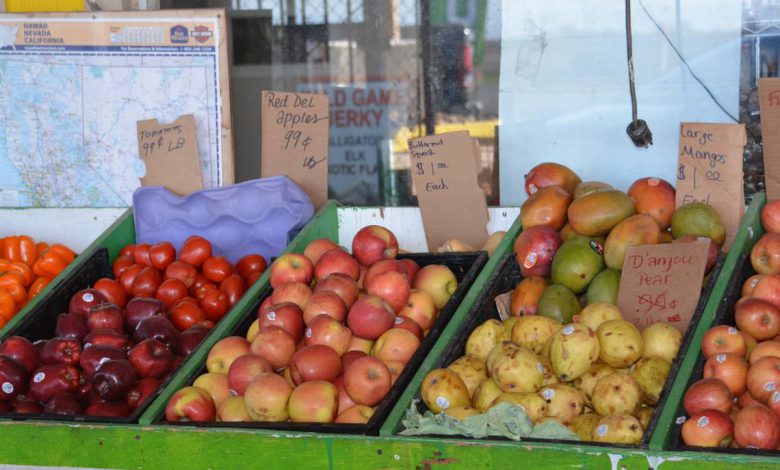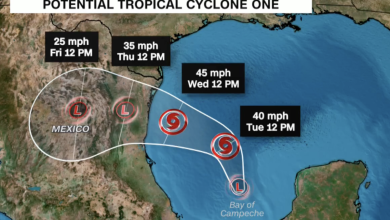How do California college students qualify for CalFresh? Here’s how to know, how to apply

A majority of California college students who are eligible for CalFresh don’t receive benefits, a study from the California Policy Lab found.
Seventeen percent of all California community college students are eligible for CalFresh. Thirty one percent of University of California students a arelso identified as possible CalFresh recipients. When combining both groups, the lab found fewer than one in three students take advantage of the benefits.
“What this means is that students are leaving money on the table,” said Jennifer Hogg, a research manager at the California Policy Lab. “That 235,000 low income students could be getting help to pay for food during school, but are not.”
Among the other barriers, there is likely a lack of understanding of eligibility and how to enroll, the California Policy Lab’s study explained.
CalFresh eligibility guidelines can be confusing and overwhelming for college students, according to researchers. As a result, students can be deterred by the process completely.
Despite how daunting the process could be, CalFresh can benefit students, said Anastasia Herrera-Tan, the crisis assistance and resource education support case manager at Sacramento State. According to a 2018 report from the California State University, 41% of students attending a CSU faced food insecurity.
“An individual shouldn’t compromise their nutrition because of lack of access,” Herrera-Tan said. “They have access. This program is out there, (students) aren’t taking away from anyone either.”
What is CalFresh?
CalFresh provides monthly assistance to purchase nutritious food for low income individuals and families. Its California’s version of the Supplemental Nutrition Assistance Program, formerly known as food stamps.
After being approved for CalFresh, individuals will receive a electronic benefits card. Similar to an debit card, this card can be used to purchase foods from grocery stores that accept it. An EBT card allows those who are low income to purchase more healthy foods at a more affordable rate. EBT cards are accepted at most supermarkets and online delivery services through Amazon and Walmart.
With an EBT card, individuals can buy “any food for human consumption,” with the exception of hot food, according to the Legal Services of Northern California. An EBT card is also acceptable to purchase seeds and plants to grow food.
For college students, going through CalFresh has extra steps.
How do I apply and receive benefits?
To learn if a student is eligible, they must go through a prescreening process. This could be through their university’s online application or by speaking through a counselor, like Herrera-Tan.
Students must meet the following eligibility:
▪ A college student, under CalFresh’s definition, that works a paid job for at least 20 hours per week, or a total of 80 months a month on average. (CalFresh defines a “student” as someone between 18 and 49, enrolled at least half time at a higher education institution, and is physically and mentally able to attend university and work)
▪ Older than 22 who is living independently from a parent or guardian
▪ U.S. citizenship or in an eligible non-citizen group, like a refugee or someone granted asylum
▪ Meet CalFresh’s income gross monthly income limits. For a one-person household, a student cannot make more than $19,578.
If a student is younger than 22 and living at home, they are ineligible. However, their legal guardian or parent can apply to create a household file.
There are exemptions to CalFresh’s paid work rule, Herrera-Tan said. If a student meets other requirements, they won’t have to abide by the working hours requirement.
If a student has a federal or state work study job, they can be eligible for CalFresh benefits.
Students who also receive Cal Grant A or B, which are financial aid awards, could be eligible for work exemption. But for this exception, they must also be unmarried, 25 or younger, and have a household income less than $50,000.
For student parents, the criteria is a bit more specific. They must have a child aged 6 to 12 and show proof they do not have proper child care. Or, a student parent can have a child younger than 6 years old, but there must be proof that work isn’t stable. This provides a reason for financial need.
A student’s major can override CalFresh’s work requirement as well. Their membership in a special academic program, like the Extended Opportunity Program and Service, a common resource for low income students, can also eliminate a work requirement. These are known as Local Programs that increases Employment. At Sacramento State, for example, 133 majors, minors and programs qualify for as such. At the University of California, Davis, there are 93.
After a student has passed the prescreening process, they should be notified in seven to 10 business days about next steps. The standard time period to schedule an interview date is two weeks from the date an application is submitted, Herrera-Tan said.
If approved, a student’s application will go to the county they currently reside in. The next step requires going online to the BenefitsCal portal.
The next process, said Herrera-Tan, should take up to four weeks. If there are errors along the way, or additional steps, the process may take longer.
A student will be required to be interviewed by a CalFresh caseworker.
Herrera-Tan stressed the importance of not missing this appointment. Rescheduling can delay receive benefits and be a “frustrating process,” she said.
During the interview, a student must provide documentation proving their CalFresh eligibility. This includes a identification card, a class schedule, proof their financial aid package, recent pay stubs and rent receipts. Herrera-Tan recommend meeting with a counselor beforehand to make sure scan copies of these documents are readable.
A caseworker may ask for additional documentation, said Herrera-Tan. A student can upload those online. A student’s county will give them 30 days from their initial interview.
After the interview, if a student is approved, they can receive their EBT card within a week or week and a half, said Herrera-Tan.
If an application is denied, students will have to wait 60 days until reapplying. Herrera-Tan recommends applying as soon as a student learns they’re eligible.
Source link



